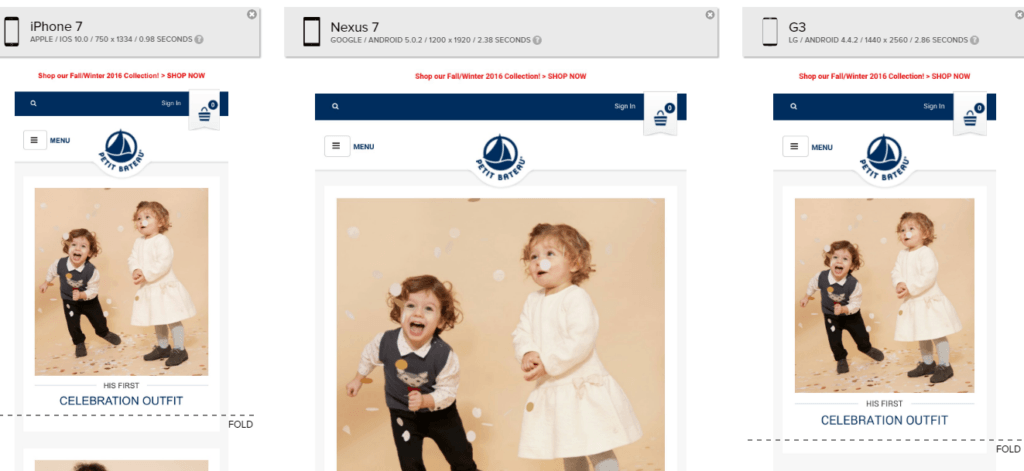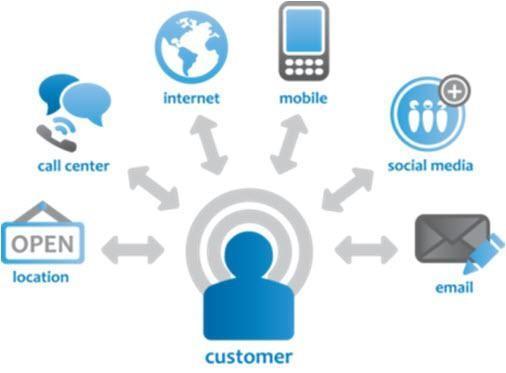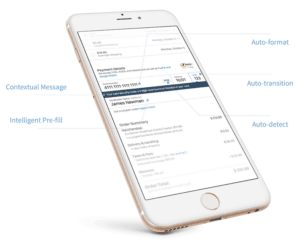As every mobile marketer knows, mobile is critical to your customer’s journey to conversion. But paradoxically, purchases made directly on phones may be the least of mobile’s impact on your sales revenues. Mobile, in fact, occupies a pivotal role at each stage of the ever-evolving customer journey:
- Inspiration and education
- Identifying the solution and comparison shopping
- Local search
- Closing the deal
It all depends upon your particular brand, specific industry, and the typical steps your customers take to complete their journeys to a purchase. Understanding the unique nature of your sales funnel and the part performed by mobile at each stage can be critical to your CRO / maximizing your CRO.
In fact, making the final conversion may be mobile’s least important impact upon your sales revenue. According to Google, customers who have researched items on their phone prior to entering a store are likely to purchase a remarkable 6.4 times as much as shoppers who haven’t conducted an online search.
The Potent Impact of Mobile: Petit Bateau
 The complexity of the multichannel customer journey makes it difficult to understand the impact of each channel on the volume of your sales. The mobile marketers at French children’s clothing brand Petit Bateau confronted this invisibility head-on. They wanted to know how online channels were affecting sales at their offline outlets and in particular the dynamic role played by mobile. Petit Bateau’s in-store sales teams saw little or no evidence that digital was paying a significant role.
The complexity of the multichannel customer journey makes it difficult to understand the impact of each channel on the volume of your sales. The mobile marketers at French children’s clothing brand Petit Bateau confronted this invisibility head-on. They wanted to know how online channels were affecting sales at their offline outlets and in particular the dynamic role played by mobile. Petit Bateau’s in-store sales teams saw little or no evidence that digital was paying a significant role.
Petit Bateau’s mobile marketer team ingeniously used loyalty cards to connect in-store sales data with each customer’s online activity. The combined data revealed:
- Almost half of in-store shoppers (44%) visited the Petit Bateau website in the week prior to making their purchase.
- Mobile visits propelled higher rates of in-store conversion, an 11% increase.
- And those who had engaged conducted mobile research simply bought more. Their purchases on average were 8% larger.
“Mobile introduces an entirely new set of behaviors across devices and channels that requires you to measure beyond the last click or the online sale.”Google
Without complete visibility into the customer journey from online digital to offline outlet, mobile marketer teams may underplay the role of mobile. They may miss opportunities to improve their sales volume and conversion rates. Misled by mobile’s lower (but increasing) rate of conversion, they might not recognize the powerful role of mobile’s across the whole multichannel customer journey.
Mobile Marketers and the 4 Stages of the Customer Journey
Investigating your customers’ journeys and their increasing multichannel complexity can help you understand how and why mobile matters at each and every stage.
But no matter the stage, your website needs to be mobile optimized, ideally across 35 different factors. It needs to be easy, fast, clear, and simplified. Otherwise, fickle mobile customers – frequently distracted, always impatient, and forever multitasking – will hop and skip away to another website or another task without a moment’s regret. Let’s look in more detail at the four stages in the customer’s journey and how they play into your marketing strategy.

#1 Inspiration
At the early stages in the customer journey, people are looking for inspiration. Google terms this step “I need some ideas.” The vast majority of smartphone shoppers (90%) haven’t latched onto a specific brand. At this broad end of the sales funnel, the consumer’s sources of info and ideas are sporadic and serendipitous – stretching from friends and social media to web surfing and actual window shopping.
Most often (66%), they turn to an online search engine and insert an approximation of what they think might be interesting or might guide them to a useful destination. Mobile marketers need to appear in relevant mobile search engine queries, not just brand- and product-specific searches, but broad categories, like “car tools,” “home décor,” or “coffee equipment.” Google reports that two-fifths of all shopping searches start with such broad categories.
At this inspirational stage, consumer don’t want to get bogged down in product description details. They are browsing images, and a good 50% of internet shoppers are accessing videos, watching on average 76 minutes each day. Your website should be easy to scan and search. GetElastic advises mobile marketers to feature images of products in context, staging them in home interiors, on models, and in use.
The inspirational educational stage is where retailers build trust by supplying useful info and shape preferences and brand awareness.
#2 Consumer Deep Dive: Comparison Shopping
Consumer power is growing. Communication among consumers with reviews and ratings has partially eclipsed the top-down publicity of advertisers to audiences. Whether comparing prices or reviewing ratings, consumers are deploying their phones to gather info and make decisions. That hungry hunt for reviews is manifest in expansion of searches for “best products” in diverse retail categories.
In the transformed customer journey, once the shopper has identified the product they desire, they begin digitally digging into details. Are you, the mobile marketer, leveraging consumers’ desire to have a say or fighting it?
On your website, feature product reviews and consumer ratings. Let customers gain confidence in your products by allowing others to speak on your behalf. And highlight your best sellers. Consumer are always struggling with the insecurities about their purchases. Let them know which products are the overwhelming pick of their peers.
The mobile marketing should not stop the consumer’s continuing desire to compare once they are in your store. Global beauty retailer Sephora, for instance, built their mobile app around the recognition that even in-store customers are still seeking reviews to determine which products best meet their needs. With the Sephora app, shoppers can scan products and quickly read detailed product specs, ratings and reviews. Loyal customers can also view their own purchase history to refresh their memory about which beauty products they’ve bought and valued in the past. The optimized mobile app helped Sephora double their sales to loyalty members, while increasing mobile orders by 167%.
#3 Local Search and the Mobile Marketer
Mobile is killer on local search. When shoppers are eager to see merchandise, touch it, and perhaps take it home in a nice shiny bag, it’s best if you’ve a maître d’ waiting at your store door, ready to greet the customer and guide them to the desired goods. That’s what local search is all about. The consumer is hunting for information that will enable them to quickly locate a nearby product or retail outlet. And your mobile website needs to be there waiting for them, with easy, clear directions and page-one organic ranking.
Smartphones are the local search tool of choice, and a stunning share of local searches turn into cash in hand. Google reports that 80% of shoppers employ search engines to find local information, whether store hours or location. Fully half of mobile consumers conducting a local search step into a retail store that day, and 36% walk out with a purchase.
Closely related to local search are inventory searches checking for product availability. Local inventory ads can turn comparison shopping into action by notifying consumers that precisely the product they are researching can be found in a nearby store.
#4 Closing the Deal

Image courtesy of MoovWeb
Mobile shoppers are notoriously fickle and impatient. Once they have chomped on the hook, don’t let them wriggle free! If your site is confusing, cumbersome, or slow, your customers may flee and head toward the nearest competitor. Make sure your website is effortless and pleasing, including of course checkout.
Google recommends multiple checkout and fulfillment options. Offer shoppers the possibility of using PayPal, Apple Pay or other options where their information is already stored. For many, nothing is deemed more bothersome than filling credit card and address into multiple mini fields.
Certainly provide a guest checkout option. About one fourth of mobile shoppers abandon their cart when forced to create a new user account. Among possible best practices, consider streamlining your checkout with automated information fill in, and auto formatting and field advancing.
Lessons for Mobile Marketers
Mobile is increasingly the bright, burning sun around which all other shopping channels revolve. In the meanderings of your customers as they travel toward a purchase, focusing merely on final conversion or just one channel may hide mobile’s central role and thus injure your revenues. Instead, ensure your website is absolutely mobile friendly and responds to shoppers’ needs – whether for inspiration, information, or an effortless transactions – at each of the four stages of the customer journey.
- Google’s AMP: Enemy or Ally to Your Mobile Friendly Website? - January 29, 2018
- Mobile Marketing: Optimize the Mobile Customer Journey - January 29, 2018
- Mobile Load Time: Increasing Mobile Page Speed to Improve Mobile Conversion - January 22, 2018
